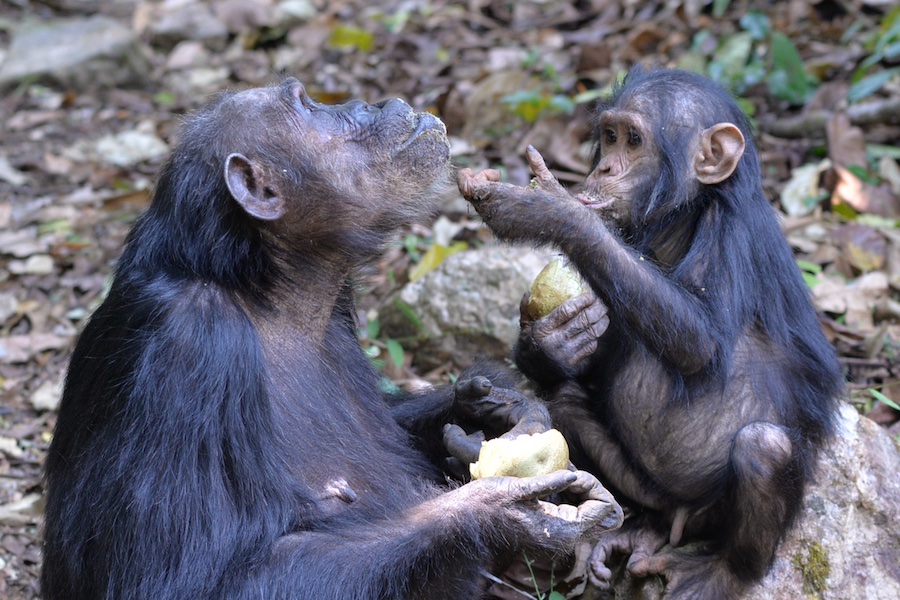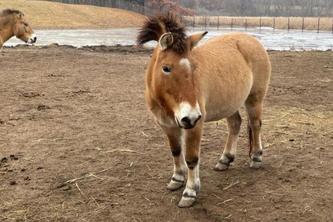
As humans evolved to hunt, gather and share food, cooperation provided a key to our success as a species. While chimpanzees and other primates sometimes share food, humans stand out. As hunter-gatherers — the subsistence strategy that all humans followed until the invention of agriculture — our survival depended on daily sharing of food between unrelated adult males and females.
While hunter-gatherers today depend heavily on hunting and cooking, long before these activities became important for our ancestors, species such as Australopithecus extracted foods such as roots, tubers and nuts. Since hunter-gatherers and nonhuman primates tend to share foods that are large, valuable and divisible, these nutrient-dense foods are likely candidates for sharing, and may have been susceptible to theft by hungry group members.
In new research published in the Proceedings of the National Academy of Sciences (PNAS), a team led by College of Biological Sciences Professor Michael Wilson developed a conceptual and mathematical model of the evolution of food production and sharing in early human ancestors. The interdisciplinary team included an economist, a theoretical biologist, an anthropologist and a primatologist.
The model was designed to predict food extraction and sharing behaviors in mating systems in species without pair-bonds, like chimpanzees and bonobos, as well as with pair-bonds, like gorillas, using the logic of evolution by natural selection. The analysis consisted in comparing these predictions in order to understand how the mating system impacts food extraction and sharing behaviors.
The team found that:
- According to the model, the mating system and pair bonds have a profound effect on the production and sharing of food.
- If males and females form pair-bonds, and males guard females from other males, this guarding behavior can protect female foraging efforts, making it worthwhile for females to extract high-quality foods and share some with their mate.
- The presence of pair bonds may have promoted the evolution of advanced foraging techniques such as digging for roots and tubers.
- The presence of pair bonds may further have triggered females to share some of the high-quality foods with their pair-bonded male: they would have benefited from such sharing by strengthening their pair-bonded male, who provided protection from predators.
According to Wilson, “We were struck by the impact of the mating system on our results. If mating is promiscuous, males share food with females, which sometimes happens in chimpanzees. But if pair-bonds exist, females share food with unrelated males — something that happens in human societies every day, but hardly ever happens in other primate species. Moreover, in scenarios with pair-bonds, females obtained more energy than in scenarios with promiscuous mating. This increased energy would enable mothers to reproduce more quickly and ensure the survival of their offspring. If early human ancestors had pair-bonds rather than promiscuous mating, this may have promoted the evolution of extractive foraging techniques as well as food sharing, which made it possible to expand from forests into more open habitats.”
In future research, the team plans to conduct field studies of primates to test the extent to which mate guarding by males protects female foraging efforts in other species. They also hope to further explore mathematical and computer models for the evolution of food sharing and communication, including the development of language.
Funding for this work was provided by the French National Research Agency (ANR).
- Categories:
- Science and Technology
- Human development





